Happy happy New Year. Here’s a little present! The following is a special guest post from the creator of the fashion blog Nemesis Babe, Marie Myrhøj. Enjoy.
About a decade ago, I became one of the first fashion bloggers in Denmark. For years, I traveled to London, Paris & Milan fashion weeks as a street style photographer, but I was mostly known on my home turf. I was a regular on the fashion scene in Copenhagen and I was lucky enough to see a number of shows from the front row.
I had dreamt of this life since I was a teenager, checking Style.com on school computers during recess. I’d always fantasized about being one of the lucky few who got to see fashion shows in person. I wanted to see the fabrics move and sway. I wanted the anticipation of waiting for the next look to emerge on the runway.
Once my dream became my reality, my attitude changed. And this is partially because the very nature of fashion shows changed. And one of the most powerful metaphors for the beginning of this change, came from none other than the sage herself, Rei Kawakubo.
For the fall 2012 Commes Des Garcons collection, Rei Kawakubo created a collection of dresses that were entirely flat. Like giant versions of cut out paper doll dresses.
I had always taken this look as a commentary on technology. A statement on how fashion shows adapted to cater to the photos on Vogue Runway (then Style.com). This show struck me as a powerful reminder of how everyone who wasn’t sitting by the runway would see the clothes: as images on a screen. Completely flat. Devoid of movement, tactility, and depth. Practically ready to print out and put on a paper doll.
Based on this interpretation of mine, I intended to write a tirade about how, ever since that show, phones have only continued to flatten clothes. I was going to argue that the presence of phones make fashion shows seem even further away from real life. That images of clothing now drown in our feeds alongside images of everything else. I was going to say that, thanks to the smartphone and apps like Vogue Runway, clothes have lost dimensionality, since you mostly just see the front of a garment.
I was planning to juxtapose images of backs and fronts of garments from fashion shows and say “see! Designs of the backs of garments have become less intricate, less designed, less fun.”. I was going to bemoan that Marc Jacobs presented his entire Fall 2023 show in 30 seconds - all the models plowing ahead at lightspeed so that they might fit entirely within a tik tok.
I was ready to start analyzing how technology had changed fashion design, making it flatter. But reflecting on that 2012 Commes des Garcons show, I realised that the ubiquity of phones has changed fashion in a different way.
There was a critical misstep in my interpretation of that 2D dress. Because 2012 was very early in the smartphone era. This Comme des Garcons show was put on at a time when most of the visual fashion reporting was still done by professional photographers planted at the end of the runway. A method that, arguably, rendered clothes even more static and two-dimensional than smartphones in the hands of the showgoers. Arguably the smartphone might have brought more depth, movement, and tactility to the clothes moving down the runway. Thanks to video, the algorithmically-preferred content, we can all watch the runway as the light changes. The model turns around. We can watch what she looks like to the viewer sitting off to the side.
It’s no surprise that, as fashion shows became more instagrammable, they had to provide more action. They became social media spectacles.
What comes to mind here are shows like is Demna Gvasalia’s Balenciaga SS20 show: a large, round room, carpeted all over and curtains all around its edges, folding chairs posed in a descending spiral towards the middle, everything in the exact same cerulean blue color. It was a completely immersive experience of set design. More recently Prada poured thick curtains of slime from the ceiling onto the runway as the models walked past at the SS24 show.
“But wait!” you might throw up your tiny handbag and exclaim. “Haven’t designers always made avant-garde experiences, even before everyone had a phone?!” You would be absolutely right, my little fashion maven. Fashion shows have always been created by artistic people. The spectacular show was a staple of Alexander McQueen — remember the robots spray painting a white paper dress on Shalom Harlow in 1999? Iconic - and theatrical!
Hussein Chalayan had a model step inside a coffee table that was part of the set, and wear it as a skirt for his AW00 show, along with four models who put on chair covers and carried the folded together wooden chairs as bags. In the end the show resembled performance art or theater, more than a show intended to sell clothes.
Designers have long taken pains to show their clothes in rich and compelling ways - whether that was in 1998, 2007 or 2023. But the phone has changed the level of engagement in a very particular way.
For the AW14 Chanel show, Karl Lagerfeld built an entire supermarket - complete with Chanel detergent, Chanel bananas, Chanel cereal in the Grand Palais, where models walked around, browsing the selection. Before and after the show, the audience could browse the isles full of Chanel branded items. I clearly remember social media flooding with photos of showgoers in the isles with detergent, coffee and ketchup. The show was immersive, and the showgoers became the main characters on their own social media. A year later, the showgoers could photograph themselves in a Chanel brasserie complete with bartenders in the middle of Grand Palais.
The phone has turned the attention away from the laser beam of the runway, and onto the experience of the showgoer. The entire experience. Take, for example, the fall show at Jacquemus from 2023.
For this show, the runway itself was minimal: a simple red carpet. But the red carpet was placed on the shore of a lake by Versailles. The immersive experience of it made it go viral. The guests arrived in pairs, and were rowed into their places on white boats that docked in a neat row along the runway. Sharing the experience of being in the boats became as integral as sharing content from the actual fashion show itself.
What was once fashion photography has become more like party photography. Capturing a fashion show is now about capturing everyone in attendance, not just in the front row. The Danish designer Cecilie Bahnsen even went as far as dressing all her guests in the FW23 collection at a concert in a private home.
Beyond visual art and fashion, the shows have smells, room for movement and tactility. At least for those who are able to be there to document it for us, the vicariously immersed masses. Where we find the difference between the spectacle pre- smartphone and the spectacle post-smartphone is how spectators have become participants. Fashion shows have moved from set design to experience design.
The FOMO-inducing designs of the shows also pose another question. Have the spectacular experiences of the shows wiped out the importance of the designs?
I personally have attended a number of experimental shows - particularly from the designer Henrik Vibskov. I remember one where the runway wrapped around a big pool of water filled with dancers.
I remember a runway wrapped around a fake butchery setting with knitted salamis hanging on hooks and fake butchers moving them around.
I remember a runway wrapped around a giant pink inflatable tongue that was moved and manipulated by dancers.
Some of these shows were touching. Some were funny. I vividly remember the scenery, the dancers, and how I felt in the moment. But the clothes on the models? Not so much. The only garment I remember from these shows is a salami dress, because I ended up buying it for myself. Along with a knitted salami.
These shows are a complete de-route from the origin of the fashion show. These shows began models walking silently in French salons, holding a number to write down for editors or buyers wanting to feature or purchase the garment. No spectacle. Just clothes. Sharing even a sketch of what you saw was strictly prohibited until the collection became available to the public.
Which role do the clothes play in the show, now that the experience of the showgoers has taken center stage? I would love to say that the clothes are equally as important as they were in a French salon in the 1950’s, but I honestly think they play more of a supporting role in the fashion show than they used to. They’re still important - they’re why the show is put on, or… well, at least that’s what I want to believe.
I decided to stop attending fashion shows in 2017 . Put simply, being an audience member became exhausting. The positioning of oneself through social media, turning the camera on ourselves, which shows we attended, which experiences we got to have, I started feeling like going to the shows wasn’t about the clothes, but about Being At The Spectacle.
My focus went from geeking out on fashion, prints, collections, cuts and trend reports… to documenting my own experience on my phone and comparing it to the experiences of others.
So I decided that if I wanted to geek out on fashion, to avoid the spectacle and self promotion and distraction, I could just as well see it all on Vogue Runway, just as I did when I was a teenager. This was, ultimately, a better way to get an idea of the entirety of the collection, its shapes and references, colors and styling. Flipping through the flat photos on my computer allowed me to actually look at the clothes without having to document that I was there to see it.
And in that way, perhaps, Rei Kawakubo was right. At least when it comes to really seeing clothes. That the future of fashion is flat.
Thank you Marie! What an honor to edit and host your essay. You can find more of Marie’s work on her personal site.
Other Articles of Interest:
My friend Shelcy wrote a beautiful ode to Ann Lowe, who you might remember from the episode The Black Fashion Museum. Lowe finally has her own solo retrospective show. Right now you can also see an extraordinary Ann Lowe gown at the Met Costume Institute… and at the Press Preview I got to meet Lowe’s great granddaughter, who parked herself firmly by her great grandmother’s extraordinary creation.
I was a menswear model for J.Crew so watch out fellas
Thank you for reading. Wishing you luck and light in 2024!




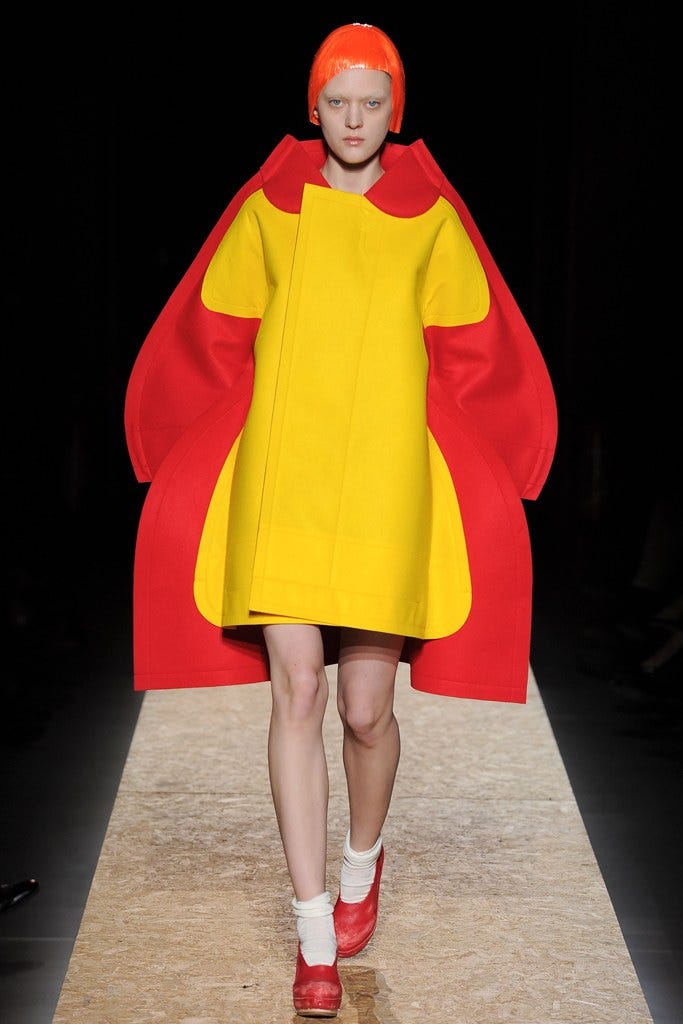
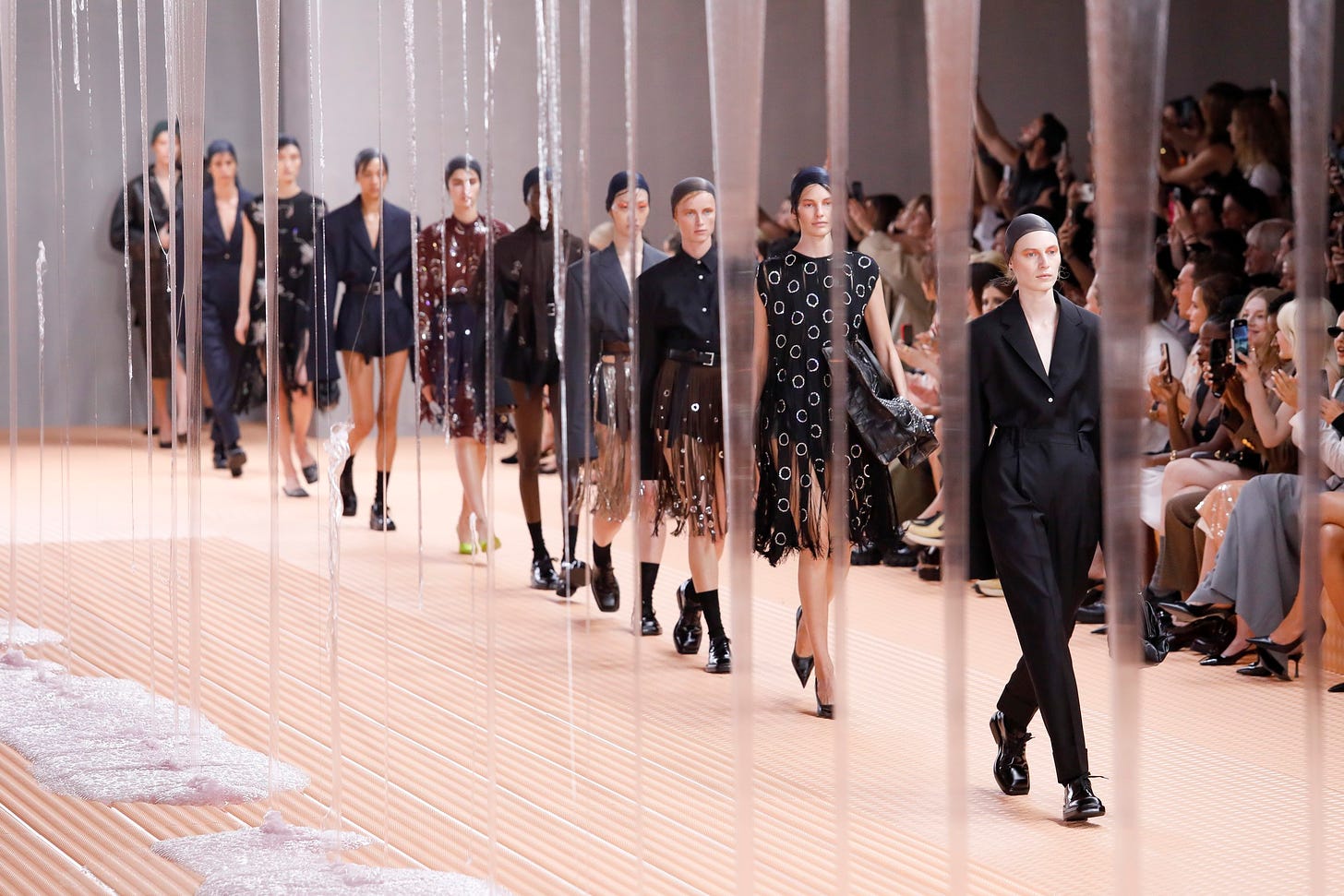
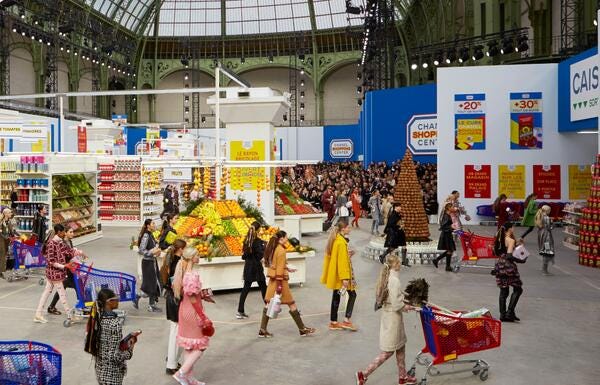
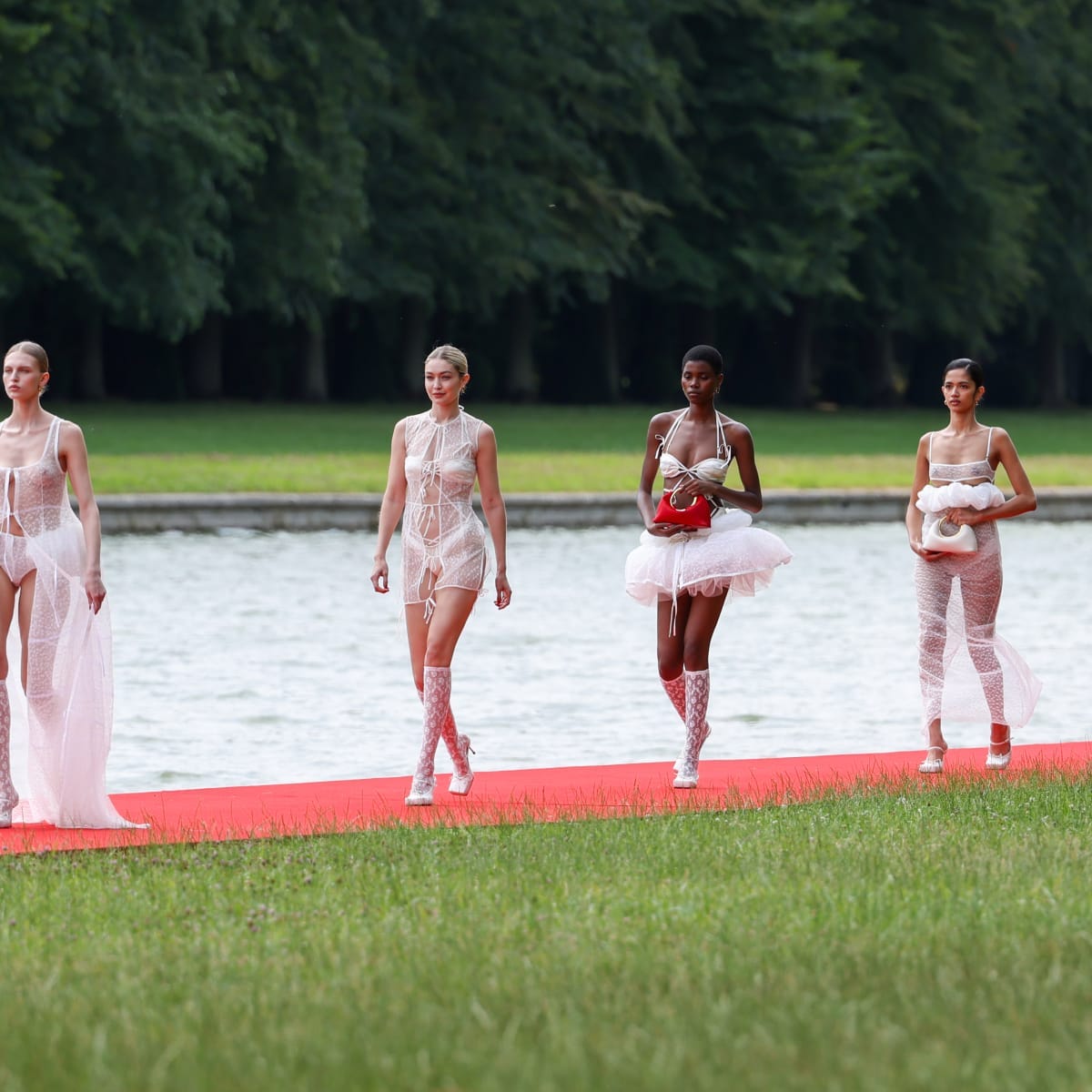

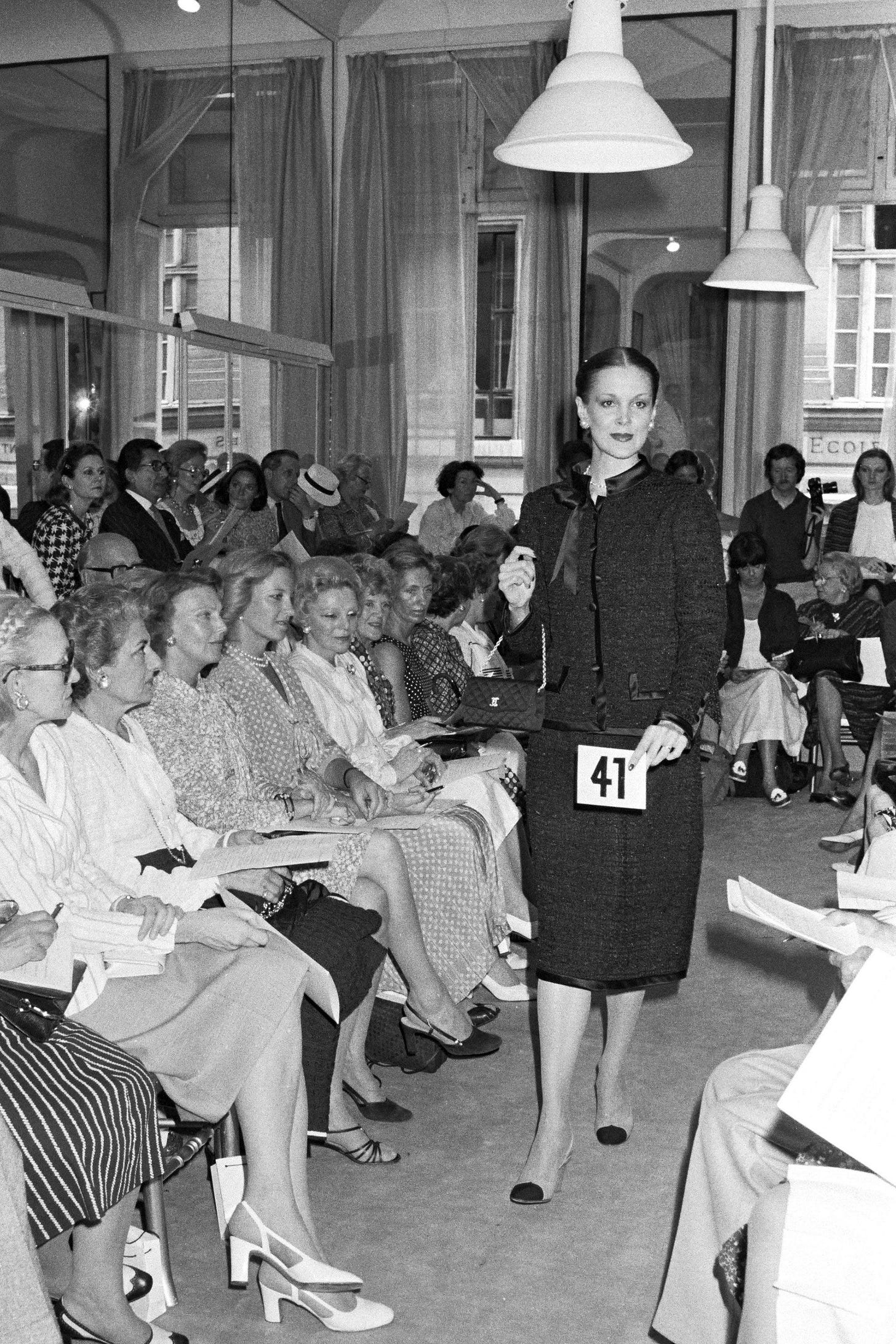
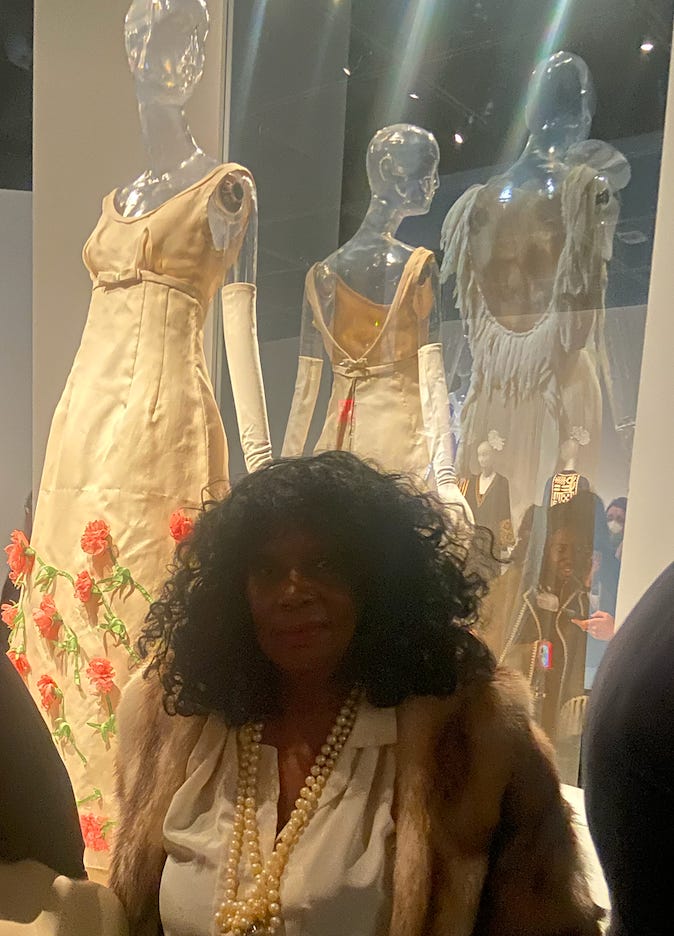
Your show is awesome. All of them, not a sinker in the bowl haha. Thank you for doing all you do and I know it’s everything from top to bottom. So please know that it’s seen and means a lot. Please never stop. I tell everyone I can.
really enjoyed this guest post (and also enjoy all your other posts & podcast episodes)! Thanks for making fashion feel intriguing rather than a competitor sport, Avery!